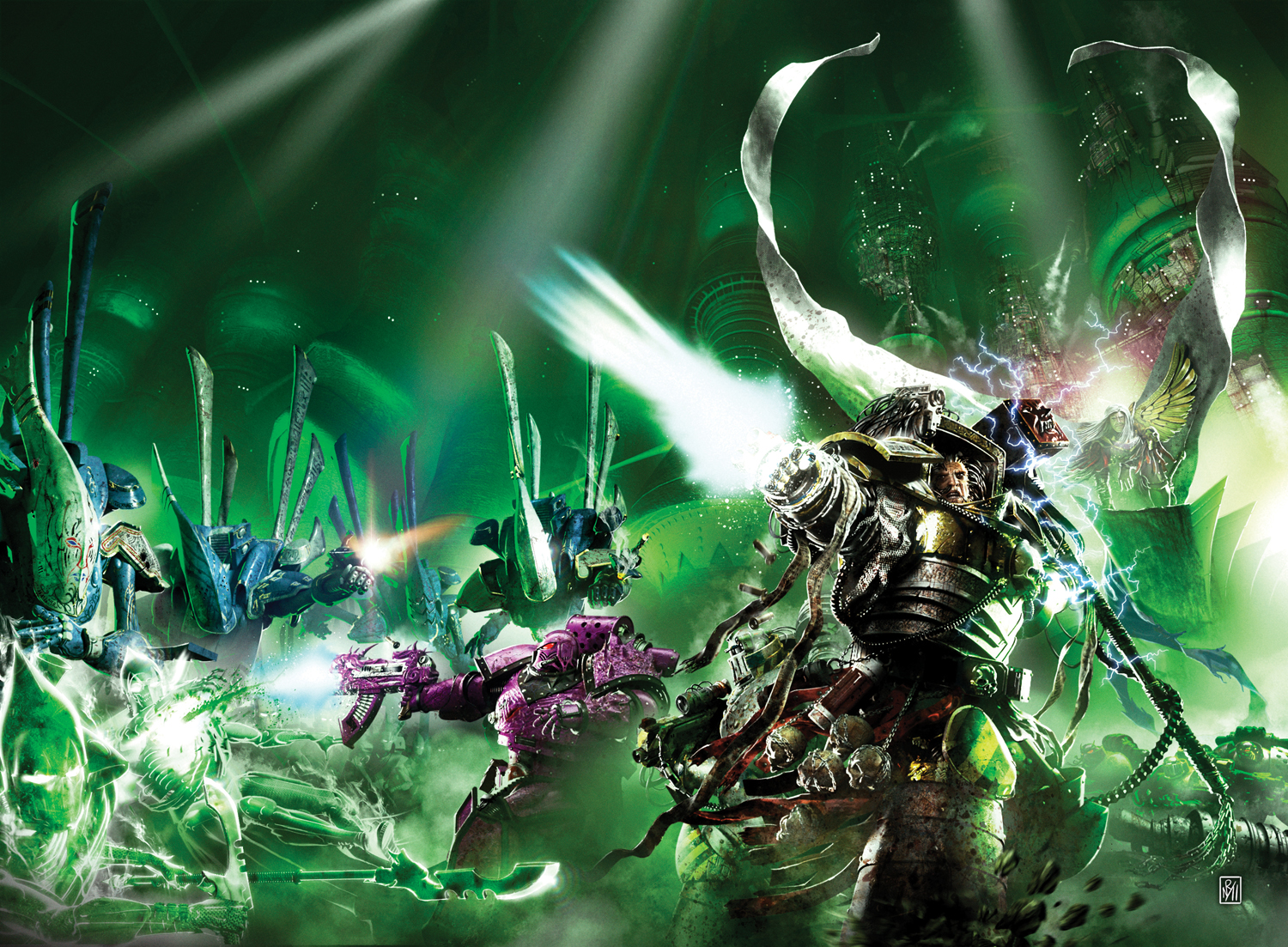
Legend tells of a foolhardy expedition, led by the radical Magos Telok, which ventured out into the unknown space beyond the Halo Worlds in search of the ‘Breath of the Gods’ – an arcane device with the power to unmake and reshape the very stars themselves. Thousands of years later, the ambitious Lexell Kotov musters his Adeptus Mechanicus Explorator fleet and sets out to follow in mad old Telok’s footsteps. With the might of the Imperial Guard and the Space Marines to augment his own forces, he searches for the hidden clues which will lead him to greatest power that the galaxy has ever known. But who knows what ancient perils may yet lie outside the Imperium and the dominion of mankind?
Writer’s Commentary
I’ve always loved the Adeptus Mechanicus, largely thanks to the imagery of Jes Goodwin and John Blanche, but had never got around to doing anything with them in a narrative sense until I wrote the short story, The Kaban Project. Writing that Heresy short whetted my appetite for telling a Heresy era story of the Martian priesthood, and from that tiny acorn grew the novel, Mechanicum. I had a ball with that novel (eventually, once I manned up and got busy with the world-building) and figured that was the end of my dalliances with the Red Planet.
But as time went on, I realised I wanted to do more with them. Mechanicum was set at a time when the Mechanicum still had a shred of invention and inquiry to it. When asking how things worked was important as just accepting that they did. I wanted to write more of the Mechanicus (as they are in 40k), at a time where that spirit of invention had been ground down over the centuries and the dogmatic superstition we know and love had come to the fore.
My first thought was that a novel called Priests of Mars should, of course, be set on Mars. But that seemed too easy, too similar to Mechanicum, and I was afraid I’d spent the whole novel just rehashing what I’d done before or finding ways to needlessly riff on what I’d done before. So I took a long look at the Adeptus Mechanicus and boiled them down to what I felt were their key motivations. The Quest for Knowledge was a clear winner when it came to choosing an aspect of the Mechanicus on which to focus. Combined with the notion of Explorator Fleet, and already a story structure was suggesting itself. Explorator Fleets are frequently composed of disparate elements, and the Kotov Fleet of Priests of Mars would no exception. Basically, it gave me a chance to play with all the best toys of 40k in one place, all of whom had a real, tangible reason for being there without feeling shoehorned.
Taking me, the characters and the readers out of their comfort zones is always good to do now and again. I’d do that literally with the crew of the Speranza, taking them out beyond the edges of the galaxy in search of ancient archaeotech.
Right away, I knew this was the right approach. This book gave me a chance to explore (literally and metaphorically) new space in the 40k universe, with the worlds reached by the expedition existing far beyond the light of the Atronomican – those most distant worlds that have been flung out of the galaxy’s orbit. These were worlds settled by Mankind in the sunset of the first great push into intergalactic space; strangely alien, yet horribly familiar. They’d be haunted, ghostly ruins, laden with archaeotech and the fading memories of a vanished epoch.
I wanted the reader to get a sense of the time before the Imperium, before the Age of Strife, and see alien cultures and factions of the Imperium we don’t normally get to see working together; Adeptus Mechanicus obviously, but also a Rogue Trader crew, Black Templars, Imperial Guard, Skitarii, and the grease-and-ash-stained menials who exist in the shadow world below decks.
As well as the epic sweep of big events (and battles), I wanted to follow the fortunes of the fleet from its High Magos all the way to the abused minions toiling thanklessly in the bowels of the mighty starships. I’d have grand battles on the surface of dead worlds, clashes in space between the explorers and the ancient guardians of powerful technologies from the earliest days of the galaxy.
It’s a book that is deliberately not like the other books I’ve written, in that it’s light on battles, heavy on characters talking to one another. There’s a dinner party scene at the heart of the book that a lot of people have said is their favourite scene, which tells you a lot about the kind of book it is. It’s primarily concerned with the characters, not the trappings around them (though they’re also important) and how they all interact with one another. A reminder that though the adepts of the Mechanicus look human, they’re pretty far removed from what any ordinary human or post-human.
Originally, Priests of Mars was to be a trilogy, but with deadlines, schedule changes and the like, it became a duology. And that would have been fine if I hadn’t followed the logical course of my titling conventions from Priests of Mars to Lords of Mars…and then to Gods of Mars. Gods of Mars is a great title, but I didn’t see any way of it working if it wasn’t part of this series. So, with a little bit of reshuffling, what was once a trilogy, then a duology, became a trilogy once again.
